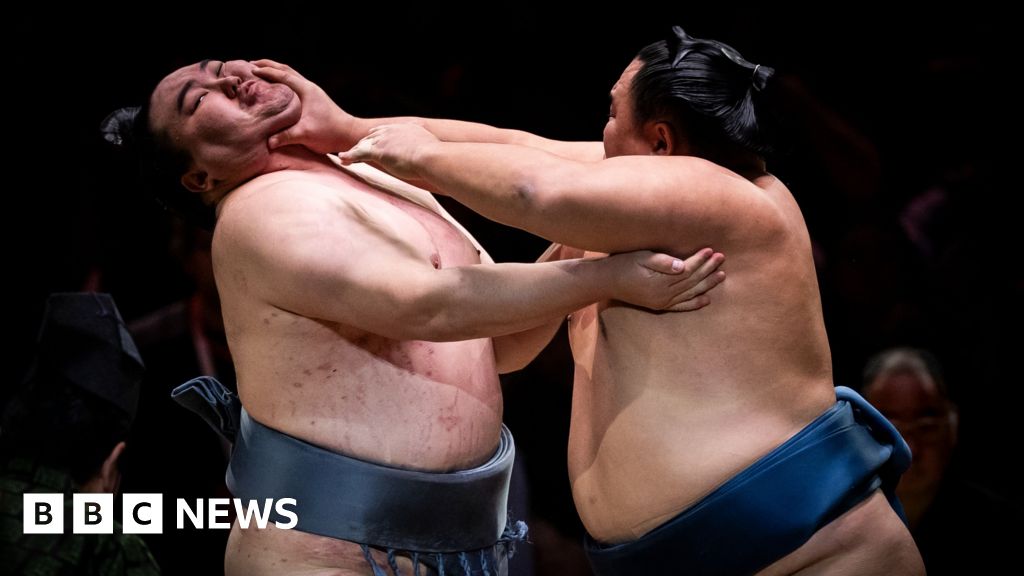Introduction to Sumo
There aren’t many sports that can captivate an audience for 45 minutes before the first point is even won. The complicated traditions that unfold in a small ring of clay, virtually unchanged for hundreds of years, managed to do just that. Welcome to the Grand Sumo Tournament, a five-day event at the Royal Albert Hall where 40 of the best sumo wrestlers showcase a sport whose first mention dates back to 23 BC.
The Grand Sumo Tournament
London’s Victorian concert hall has been completely transformed, including a six-tonne Japanese temple roof hanging over the ring. Here, wrestlers known as rikishi perform with their legs to drive away evil spirits and clap to attract the attention of the gods. Above all, a giant, rotating LED screen that wouldn’t be out of place at an American basketball game gives the audience all the stats and replays they could want. Sumo may be ancient and have strict rules governing every aspect of a rikishi’s behavior, but it still exists in a modern world.
The Growing Popularity of Sumo
Sumo is helping to spread far beyond Japan’s borders, thanks to the modern world. It was a "random video" that first caught Sian Spencer’s attention a few years ago. She then discovered dedicated YouTube channels for some of the sumo stables where rikishi live and train. The London tournament was simply a “once-in-a-lifetime” opportunity that shouldn’t be missed to see it all in real life.
Discovering Sumo
Julia and her partner Cezar discovered sumo through a more traditional route: a trip to Japan six years ago. They thought it was a very touristy activity, but in the end, they really loved the sport. From then on, they tried to find communities and information to learn more and more about it. They realized that colleagues, friends, and family might be quite surprised by their new passion. It’s the only sport they watch, and so they found like-minded people via messaging apps like Telegram.
The Challenges of Sumo
A trip to Japan is almost the only way to see a top-class sumo tournament. This week’s event in London is only the second time the tournament has visited the city – the first in 1991 – while its last overseas trip was to Jakarta in 2013. But even a trip to Japan is no guarantee of a seat. Last year, all six bi-monthly, 15-day events sold out for the first time in 28 years, fueled by domestic interest and the tourist boom that saw more than 36 million foreign visitors visit in 2024.
The Excitement of Sumo
For many, the London tournament will be their first time seeing sumo in person – and it’s not a disappointment. "When you see it up close, you get a sense of the speed and power that you don’t get on TV. It was incredible," said Caspar Eliot, a 36-year-old fan from London. To win, one man must knock another out of the ring or to the ground with brute force. The majority use one of two styles to accomplish this, often in a split second: pushing or grappling.
The Problems Facing Sumo
Sumo – despite all the sold-out events – is not without its problems behind the scenes. A series of scandals involving bullying, match-fixing, and sexism in recent decades have damaged the image. And then there’s the fact that last year – despite being a banner year for ticket sales – saw the lowest number of new recruits in the stables. Perhaps the austere life of a rikishi no longer looks as tempting as it once did.
The Future of Sumo
Japan’s declining birthrate won’t help either – nor will the Japanese Sumo Federation’s rule limiting each stable to only one foreign rikishi. Nevertheless, the Mongols have dominated in recent years – and one of the most exciting rising stars comes from Ukraine. Not that this worried fans in London. “Seeing all these rituals and ceremonies that are part of sumo is very special,” says Fan Sian. “Seeing it in person now makes you feel like you’re more a part of it.”
Conclusion
For Megha, the drama "made it so incredible" – as did meeting the other fans. “Coming out of a very niche Reddit community and seeing all these sumo fans in person and chatting with other people who are as interested in the topic as we are – that was worth every penny of sumo gold.” Do you want to watch? Audiences can tune in via BBC iPlayer, the BBC Red Button, the BBC Sport website and app.

